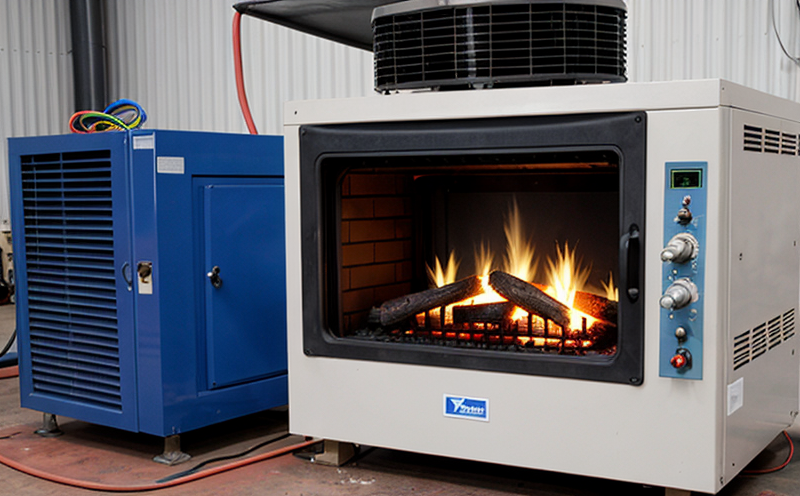IEC 62722 Thermal Management Testing of LED Luminaires
The International Electrotechnical Commission (IEC) standard IEC 62722 provides a framework for testing the thermal management performance of LED luminaires. This standard is critical for ensuring that LED luminaires operate efficiently and safely under various environmental conditions, which directly impacts their service life and energy consumption.
Thermal stress can significantly affect the efficiency and longevity of LED luminaires. Overheating can lead to premature failure or degradation in luminaire performance. IEC 62722 outlines a series of tests designed to evaluate how well a luminaire manages heat generated by its light-emitting diodes (LEDs). This standard ensures that luminaires meet stringent thermal management requirements, thereby enhancing their reliability and performance.
The testing process involves subjecting LED luminaires to controlled environmental conditions. The luminaire is placed in a specially designed chamber where temperature levels are precisely regulated using heating elements or cooling units. The test chamber simulates real-world operating environments, including extreme temperatures that the luminaire might encounter during its lifecycle.
During the testing process, the thermal resistance and thermal conductivity of the luminaire are measured. This is done by monitoring the heat flux from the LED to the surrounding environment under various conditions. Additionally, the temperature distribution within the luminaire casing is recorded using thermocouples or other temperature sensors. These measurements help determine whether the luminaire's internal components can dissipate heat effectively.
Another key aspect of IEC 62722 is its focus on thermal cycling tests. These tests simulate the effects of cyclic temperature changes that a luminaire might experience in different geographic locations. The luminaire is subjected to rapid temperature variations, and its performance is monitored throughout these cycles. This ensures that the luminaire can withstand temperature fluctuations without compromising its functionality.
IEC 62722 also emphasizes the importance of heat sinking materials used in LED luminaires. Heat sinking refers to the process of transferring heat from the LEDs to a cooler area, typically the luminaire's housing or external fins. The standard provides guidelines for selecting and testing different types of heat sinking materials. This includes evaluating their thermal conductivity and durability under various environmental conditions.
The results of IEC 62722 tests are essential for quality managers, compliance officers, R&D engineers, and procurement specialists who need to ensure that LED luminaires meet international standards. By adhering to these tests, manufacturers can guarantee the reliability and performance of their products in diverse operating environments.
In summary, IEC 62722 is a critical standard for evaluating the thermal management capabilities of LED luminaires. It ensures that luminaires perform efficiently under various environmental conditions, enhancing their service life and energy efficiency. Compliance with this standard is essential for manufacturers aiming to meet international quality standards and ensure product reliability.
Applied Standards
The primary applied standard used in IEC 62722 Thermal Management Testing of LED Luminaires is the IEC 62722 series, which includes several parts addressing different aspects of thermal management. Part 1 provides an overview and scope, while Parts 2 through 4 cover specific test methods for evaluating various thermal properties.
- IEC 62722-1: Overview and Scope
- IEC 62722-2: Thermal Resistance Measurement
- IEC 62722-3: Heat Sink Material Testing
- IEC 62722-4: Ambient Temperature Cycling
The standard also references other relevant standards such as IEC 60950, which covers safety requirements for electrical equipment in the home. Compliance with these interconnected standards ensures comprehensive evaluation of LED luminaires.
Benefits
Compliance with IEC 62722 offers numerous benefits to manufacturers and users of LED luminaires. Firstly, it enhances product reliability by ensuring that luminaires can withstand extreme temperature conditions without compromising performance. This leads to extended service life and reduced maintenance costs.
Secondly, compliance with this standard improves energy efficiency. Efficient thermal management reduces heat buildup within the luminaire, which in turn decreases power consumption. This not only lowers operational costs but also contributes positively to environmental sustainability by reducing greenhouse gas emissions.
Thirdly, IEC 62722 ensures international acceptance and recognition of LED luminaires. Compliance with global standards such as this one allows manufacturers to enter new markets more easily and compete effectively on a worldwide scale. This is particularly beneficial for companies looking to expand their operations internationally.
Finally, compliance helps in meeting regulatory requirements imposed by various countries around the world. Many jurisdictions have regulations mandating certain levels of thermal management performance for LED luminaires. Compliance with IEC 62722 ensures that manufacturers meet these legal obligations and avoid potential penalties or market entry barriers.
International Acceptance and Recognition
- The United States: The U.S. Department of Energy (DOE) recommends compliance with IEC 62722 for LED luminaires to ensure energy efficiency and reliability.
- European Union: Many EU member states require compliance with international standards like IEC 62722 to facilitate market access.
- China: China's national standards are aligned with international norms, including those from the IEC, ensuring seamless trade between countries.
The widespread adoption of IEC 62722 across these and other regions underscores its importance in ensuring consistent quality and performance of LED luminaires globally.





